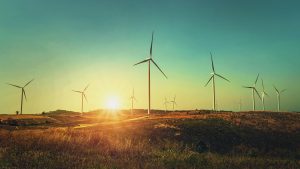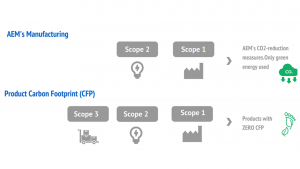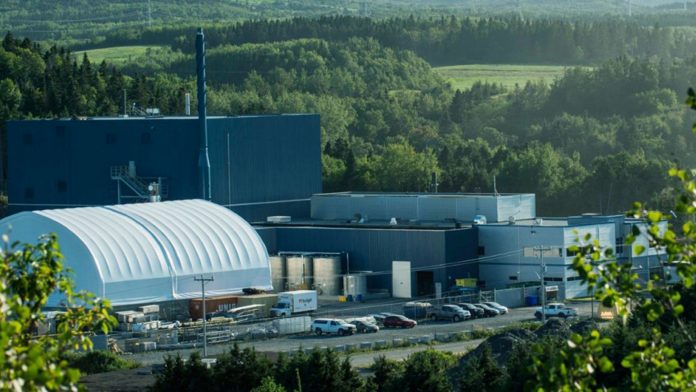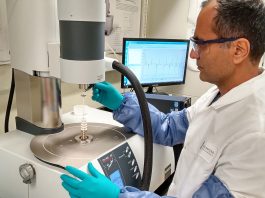Advanced Energy Minerals details how its unique chlorine leach–crystalline purification process can reduce the carbon footprint of high purity alumina production.
How can high purity alumina be produced sustainably? Advanced Energy Minerals (AEM) considers sustainable production to be of the utmost importance.
The company manufactures ultra-high purity alumina (HPA) at its production plant in Cap-Chat, Quebec, Canada, that it delivers under the SupALOX™ brand.
How HPA production increases carbon emissions
It is well known that the conventional alkaloid process for manufacturing HPA is a notorious ‘energy hog’, yielding a typical carbon footprint of 12.3 tonnes of CO2 emitted per tonne of high purity alumina. This is an incredibly high ratio compared even to the energy consumption within the cement and steel industries with their ratios of only 0.6 and 1.85 tonnes of CO2 emitted per tonne of cement2,3 and steel4,5,6, respectively.
The alkaloid process for high purity alumina also relies on expensive, carbon-intensive aluminium metal as its feedstock, which clearly will not be acceptable in the future.
Shocked by numbers like these, consumers and investors are making decisions based on sustainability. For example, the Norwegian sovereign fund – one of the world’s largest investors with more than €1.1tr invested7 – now requires each of its 9,000+ invested companies to show plans to reach net zero by 20508. Therefore, it is clear that the alumina industry needs an alternative to manufacture 99.999%-pure 5N HPA at a competitive price.
The market has a strong demand for HPA that will increase rapidly in years to come. This is because HPA has excellent properties in terms of chemical stability, its high melting point, and high mechanical strength and hardness. It has good thermal conductivity but high electrical insulation.
High purity alumina takes on different crystalline structures known as alpha (α), beta (β), and gamma (γ), with each possessing different properties. α-HPA has a low specific surface area and is very resistant to high temperatures. Because it is inert, it has almost no catalytic activity. γ-alumina has excellent dispersion and a higher specific surface area, but it is inert and provides high activity9.

Emissions Scopes according to the Greenhouse Gas Protocol10,11
- Scope 1 Emissions from sources that a company owns or controls directly.
- Scope 2 Emissions that a company causes indirectly when the energy it purchases and uses is produced.
- Scope 3 Emissions not produced by the company itself, and not the result of activities from assets owned or controlled by them, but by those that it is indirectly responsible for, up and down its value chain. Scope 3 emissions include all sources not within the boundaries of Scopes 1 and 2.
Reducing the industry’s carbon footprint
The first step in reducing the carbon footprint and environmental effects of the HPA industry is to reduce the power requirement for manufacturing processes. This starts with the design of the processes and the manufacturing plant to implement them. As a basis to reduce power consumption, hydrometallurgy processes use much less power than thermal process steps.
AEM’s proven chlorine leach–crystalline purification (CLCP) process currently emits 12% of carbon emissions of the alkaloid process used to produce high purity alumina and is expecting to further reduce in Q3 of 2023.
The CLCP process produces almost zero waste. Hydrochloric acid, an important input chemical, is recycled many times within the process before being discharged. As a by-product, it predominantly takes the form of aluminium chloride, which is sold for use in water treatment. The water from our processes that we do not recycle is treated and released under strict guidelines.

The product going out must match the customers’ requirements exactly so that they can minimise their process steps and maximise their productivity. This means that high purity alumina cannot be seen as a commodity product where the customisation is left to the customer, a wide and versatile product portfolio is needed. Powder particle size can be controlled both at the crystal-growing stage and via subsequent milling – although the latter requires careful control to avoid contamination by the grinding media. Powder must be tailored to a customer’s specific requirements for particle size, densification, and doping. Pellets (compacted powder in a ‘puck’ shape) must also meet exacting specifications to fulfil their applications.
Looking ahead
Customisation to meet special requirements involves simulation, development in the laboratory, and transfer to production. Quality controls after manufacturing complete the technical involvement to the benefit of the customer, with a location convenient to North American and European markets that simplifies shipping.
Even if the site is not in a location where every turn of a spade is audited and certified, transparency must be maintained for internal and external purposes. All systems are running to identify where things come from and where they are going and logging of operations is ongoing in preparation for internal and external audits.
As we have seen, sustainability depends on many factors. Process design, the reduction of power requirements, an advantageous site, green energy sources, clean feedstocks, and customised products are all important to sustainably produce and deliver ultra-high purity alumina.
References
- AEM Internal data
- https://news.wttw.com/2022/06/22/cement-carbon-dioxide-emissions-quietly-double-20-years
- https://essd.copernicus.org/articles/13/1667/2021/ “CDIAC-FF: global and national CO2emissions from fossil fuel combustion and cement manufacture: 1751–2017”
- https://www.recyclingtoday.com/news/worldsteel-co2-report/
- https://www.iea.org/reports/iron-and-steel
- https://www.mckinsey.com/industries/metals-and-mining/our-insights/decarbonization-challenge-for-steel
- https://www.reuters.com/business/sustainable-business/norways-sovereign-wealth-fund-tells-companies-set-zero-emission-goals-2022-09-20/
- https://www.weforum.org/agenda/2022/09/norways-massive-sovereign-wealth-fund-sets-net-zero-goal/
- https://www.innovationnewsnetwork.com/ultra-high-purity-alumina-sustainably-manufactured-canada/20960/
- https://www.nationalgrid.com/stories/energy-explained/what-are-scope-1-2-3-carbon-emissions
- https://ghgprotocol.org/
Please note, this article will also appear in the thirteenth edition of our quarterly publication.








